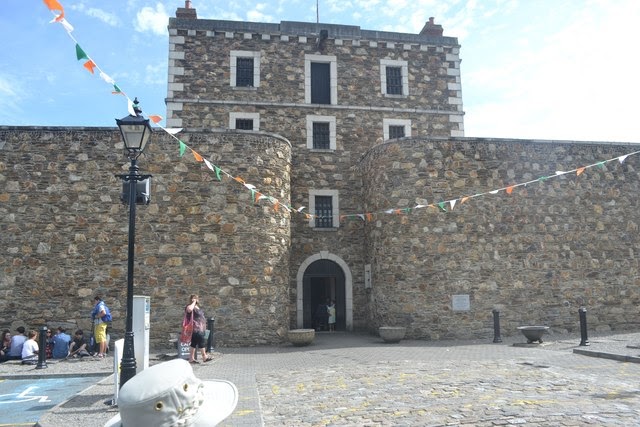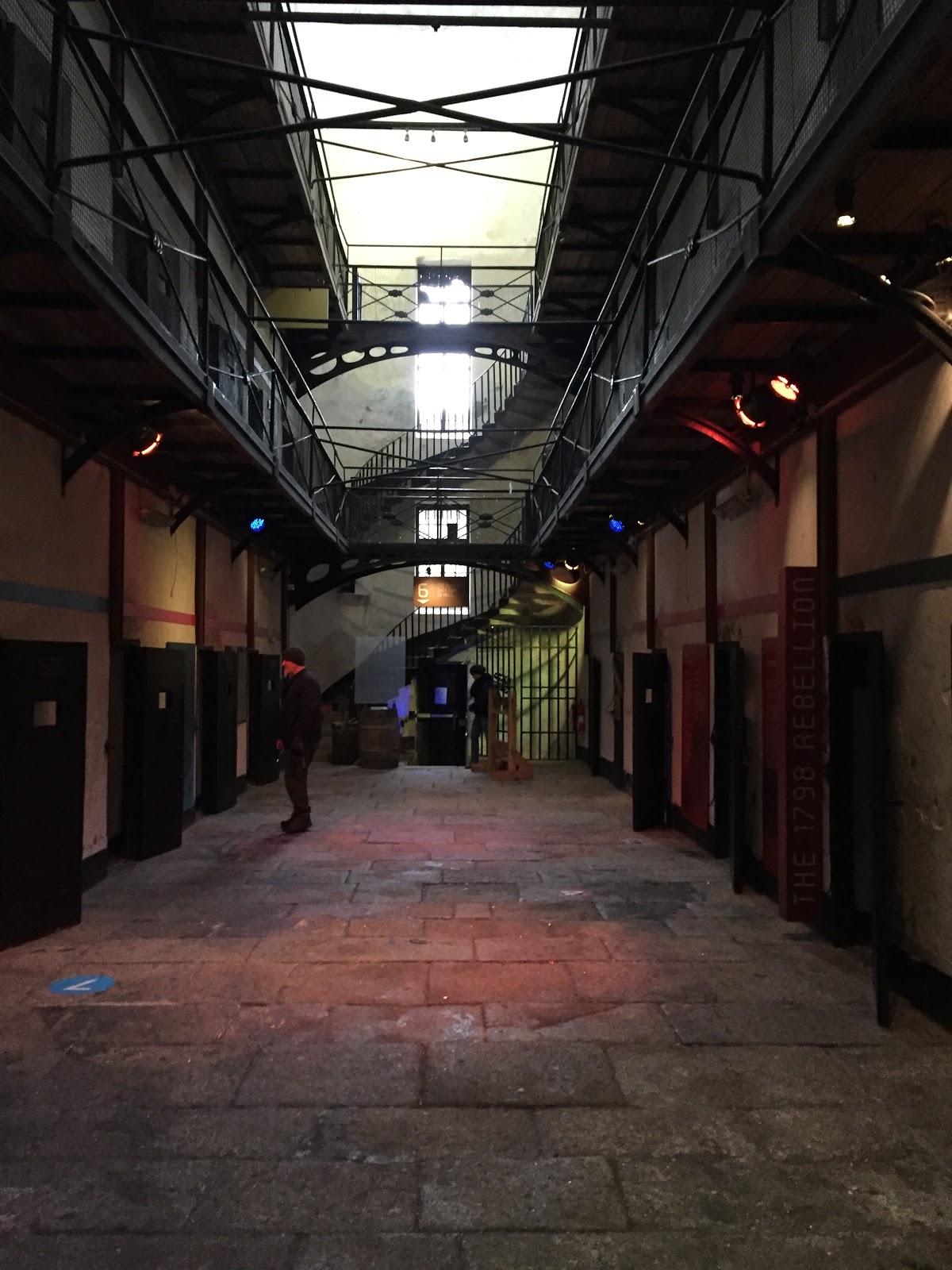Welcome to our second ‘Postcard from Ireland’ where the Irish Family History Centre try and give you a flavour of some of the new or lesser known museums / exhibitions and attractions in Dublin and further afield in Ireland.
We hope you enjoyed our literary trip last time to the Seamus Heaney ‘Listen Now Again’ exhibition. Over 400,000 people visit Kilmainham Gaol in Dublin each year and it is without doubt one of the most historic and atmospheric attractions in the city; having played a pivotal (and well-known) role in Irish history. The aim of our postcards however are to look beyond the well known – therefore we decided to head south of Dublin to County Wicklow and visit the lesser known Wicklow Gaol.

The gaol was built in 1702 and operated until 1924. There is a definite feeling of foreboding as you walk through the door and into the main cell block. Visiting on a cold January day made the sense of stepping back in time even more palpable and I found myself thinking of what it would have been like to be incarcerated in one of the cells.
The first recorded prisoner was a Priest, Owen McFee, convicted of saying mass. He was later transported to the then British colony of America. It was also to hold rebels from the 1798 Rising, convicts to be transported to colonies in America and Australia and desperate women and children who stole simply to feed themselves during the Great Famine between 1845 – 1852.

Audio recounting the inmates’ stories and costumed characters add to the experience; so it becomes hard to believe what you’re seeing is just a performance of the very real people who once inhabited these cells. For example the voice of William “Billy” Byrne a well known rebel leader during the 1798 Rebellion in Wicklow tells you how he led several local attacks before being tried and executed. Byrne was held here in Wicklow Gaol and a statue commemorating his life can be found in the centre of Market Square – just down the hill.
A narrow staircase leads to underground solitary confinement cells (definitely the eeriest part of the gaol) where a life size executioner is projected onto the wall to tell you your fate. I certainly felt a sense of relief as I returned to ground level and onwards to the upper floors, where we discovered a scale model of the HMS Hercules that transported convicts to New South Wales.
Their excellent use of technology makes our visit absorbing and educational – and, if you are feeling brave, you can even do a night tour in what has often been called ‘the most haunted building in Ireland’!
A bus will be running from Wicklow town to the famous monastic site of Glendalough this summer so if you’re planning a trip, its easy and convenient to have a full day seeing some of Wicklow’s best sites.
https://www.wicklowshistoricgaol.com/
Open Daily
10.30am -16.30 pm 1st February to 31st November
*11am to 3.30pm – 1st December to 31st January
» Adult €9.50
» Child €6.50
» Family €26
» Student/OAP €8.00
Free Audio Guides in in French, German, Spanish, Italian & English
By Fiona O’Mahoney
